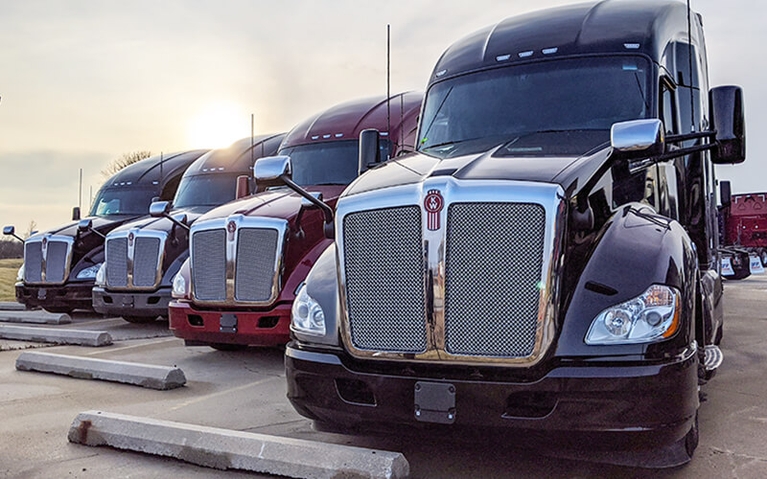How to lease my semi-truck to a company: 5 steps to take
May 25, 2021

Owner-operators have a couple of general options when it comes to getting their loads.
Some owner-operators work with brokers or rely on public load boards to gain access primarily to the spot market. Other owner-operators do business with a carrier, which usually means selecting your freight from a private load board or getting dispatched by the carrier.
Doing business with a company can provide the stability and predictability your business needs to grow. If that’s your goal as an owner-operator, follow these steps on how to lease a semi-truck to a company.
5 steps on how to lease a semi-truck to a company
1. Understand what "leasing-on with/leasing to" a company means.
Leasing-on with a company and leasing to a company are interchangeable. If you’re in the beginning stages of starting your trucking company, it can be difficult to fully grasp what these phrases mean.
It’s also easy to confuse ‘leasing a truck from’ and ‘leasing your truck on with’:
- Leasing a truck from: As an owner-operator, when it comes to obtaining a truck, you can either purchase one or lease one. Many owner-operators lease a truck from a company like SFI Trucks and Financing, where little to no down payment is typically required and all credit types are usually accepted.
- Leasing a truck on with/leasing a truck to: Many owner-operators lease their truck to a company like Schneider, which means they do business with Schneider to move freight but do not work directly for Schneider.
2. Decide what type of freight you want to haul.
If you are going to lease a semi-truck to a company, you will want to make sure they offer the business opportunity you’re looking for. Opportunities could range from hauling dry van truckload freight to tanker loads to shipping containers and more.
Whatever type of freight you want to haul will determine what company you do business with, what equipment you’re required to have and what kind of experience/qualifications you need.
3. Find out if you have enough experience and the necessary qualifications.
Most companies require owner-operators to have some basic qualifications. These could include:
- Having a certain amount of driving experience.
- Possessing a valid Class A Commercial Driver’s License.
- Using a tractor that is a specific year or newer, with an engine meeting certain requirements or specifications.
The best way to determine what qualifications you’ll need when you’re starting your trucking business is to do research on various companies’ websites and to call their recruiters.
4. Get a truck and obtain the necessary documentation.
As mentioned above, owner-operators can either lease a semi-truck or purchase a new or used one from a company like Schneider Used Trucks. It’s up to you to decide what’s best for your business, but keep in mind the company you do business with may have specific truck requirements you need to meet.
Obtaining the necessary documentation is one of the five steps to becoming an owner-operator. You’ll need to purchase permits, licenses, endorsements and more.
It’s also important to know what type of truck insurance you will need to have. Carriers, like Schneider, typically require leases to carry Workers’ Compensation or Occupational Accident insurance, physical damage insurance and Non-Trucking Liability insurance (often referred to as “Bobtail” or “Unladen” insurance).
5. Apply for the business opportunity.
After you’ve determined what type of freight you want to haul, have met all the requirements of the opportunity and have a truck that will get the job done, you should be ready to apply for the business opportunity you’re interested in.
Most companies encourage owner-operators to apply for business opportunities on their website.



